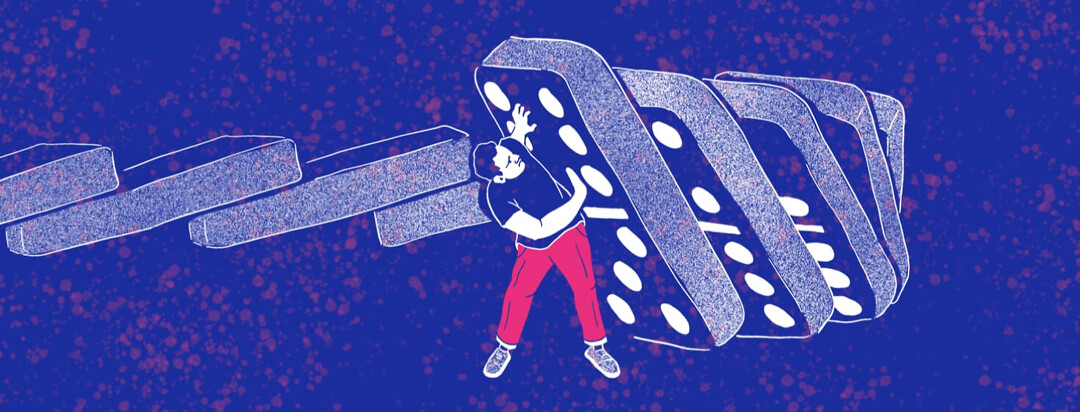Narcolepsy and the Social Model of Disability
According to England and Wales-based disability equality charity, Scope,
The (social) model says that people are disabled by barriers in society, not by their impairment or difference. Barriers can be physical, like buildings not having accessible toilets. Or they can be caused by people's attitudes to difference, like assuming disabled people can't do certain things.1
How does this check out for narcolepsy?
The social model vs the medical model
For me, I think that whilst it’s not 100 percent, there is a lot to be said for such a theory, and it makes a lot of progress from the medical model in some respects.
The medical model works from the idea that a disability is created by the person’s body or mind having something "wrong" with it and does not account for social barriers.
Social and systemic challenges
There are many social struggles that are created by the way that the general public, friends, and family treat you as a result of having narcolepsy, which affects your quality of life.
The struggles are also systemic: that is, not one individual but a system that is actively built for your exclusion as a chronically ill or disabled person.
One of the most prominent examples of this is workplaces that are discriminatory, not accessible, or flexible. This can also be a domino effect at getting access to other important things, such as housing. (Although it's illegal, most landlords do not accept tenants who are not working, even if well within the budget of their welfare income, for example. They often advertise properties with language such as "workers only."2)
Imagining a world built for people with narcolepsy in mind
If I were in a world where for example:
- Sleepiness was not considered lazy or funny.
- I was diagnosed soon after my symptoms came on (more awareness).
- I was taken seriously and listened to by medical staff (collaborative approach).
- Friends and family were understanding and willing to listen about my condition.
- Things were open at the times I am awake (e.g., at nocturnal hours!).
- I was able to nap whenever I needed (e.g., in workplaces, nap spaces in public places).
- I was given equitable support to get my day-to-day tasks done, such as getting up in the morning.
- I was given workplace accommodations, including more time to finish tasks, and did not face discrimination in the workplace.
- I was given proper support with catching up with things I had missed due to sleepiness – for example, in workplaces or universities.
- Cataplexy was something people understood and was not a humiliating public spectacle or be accused of "faking."
- I was able to access the frontline treatments for narcolepsy (and there was a widespread, well funded universal healthcare for all).
With all these things in place (not a complete list!), would I still consider myself disabled?
Would I still consider myself disabled?
For me, the answer is complex. I think that these things account for a great deal of the difficulties associated with narcolepsy. It also goes without saying that if these adaptations were made and we lived in a more equitable society, the lives of many people with narcolepsy would likely improve dramatically.
I believe there’s a lot to be said for the social model, and for some conditions, it fits incredibly well. For others, it doesn’t work so well at all. Chronic pain is one such example since no matter how accepting and accommodating society was, the person would still be in pain, and that is still disabling.
Just as it floats between wakefulness and sleep, for me, narcolepsy does not quite fit in with the current social model. The idea covers a lot of ground around the social isolation of having narcolepsy and the ways that we could flourish in certain areas if we were not pushed out.
Challenges that would still exist
However, in a world more built for me, for example, these things would still be true:
- The dangers and struggle of cataplexy, even if it was normalised and accepted by people surrounding me. For example, I would still be at higher risk of drowning if I went swimming (and at a higher risk of accidents in general).
- The frustration at having fragmented time and being unable to finish things.
- Having less waking time all around.
- I would still have brain fog that causes difficulties with clear thinking, memory, etc.
- I would still be excessively sleepy and have associated discomfort, disorientation, and emotional struggle.
- I would still be tormented by terrifying nightmares and hallucinations.
- I would still be unable to drive (because for me personally, sleepiness is too frequent and unpredictable but I understand that some people are still able to drive while medicated and with accommodations).
- I still wouldn’t be as free as able people and I would still need to take planning and make adaptations to things in order to try and make them work.
Taking these things into account, I believe it would still be a struggle fittingly described as a disability. That being said, it would make life so much more manageable if changes such as the ones suggested above were in place.
So there really is a place for implementing social model informed changes. It’s just important to know that it does not account for all of the obstacles and difficulties faced due to narcolepsy.
Time for a social model 2.0?
I believe that the social model has lots of merits to it, but as it has been widely suggested, I believe it is in need of an update. I will look into what this might look like with narcolepsy in mind in a future article.
What do you think about the social model of disability?

Join the conversation